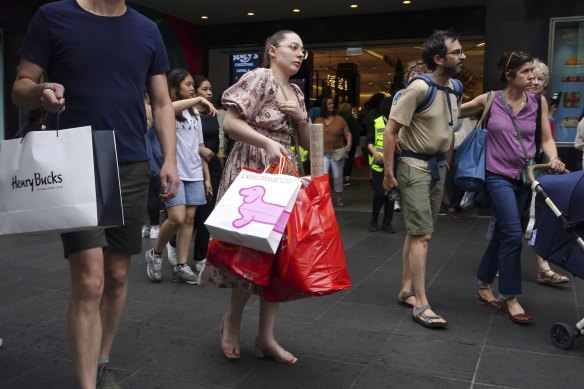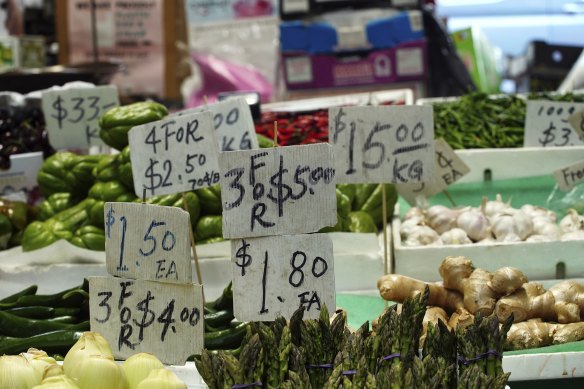2023: The year of the gloomy consumer

Save articles for later
Add articles to your saved list and come back to them any time.
As we limp towards the end of the consumer annus horribilis that was 2023, for many people, this was the year in that the interest rate Grinch threatened to steal Christmas.
The last of this year’s consumer sentiment readings from Westpac reveals the lowest yearly score (bar one) since the bank began collecting the data back in 1974.
It shows people are feeling worse than they did during COVID, or even the global financial crisis.
Seasonal gloom: Shoppers on Melbourne’s Bourke Street Mall.Credit: Luis Ascui
Thus, this year trumped all years other than 1990 in the poor sentiment stakes. But back then, the economy was tipping into the worst modern-day recession on record. Borrowers were experiencing interest rates that were up at around 18 per cent.
In 2023, we have managed to avoid a technical recession and have almost full employment – so the issues that weighed on sentiment back in 1990 are considerably different from those that consumers are feeling today.
The shape of today’s economic malaise is different and more of a consumer recession or stagnation, driven by income growth falling behind cost-of-living increases. The 2023 sentiment reading paints a clear picture of the pain and apprehension felt by consumers in response to the assault from the increased cost of living.
The cost-of-living crisis has hit consumer sentiment.
Matthew Hassan, Westpac’s senior economist and the survey’s author, said consumers have seen incomes come under extraordinary pressure from the surge in the cost of living, sharply higher interest rates and a rising tax take.
While the sentiment reading from the month of December was slightly improved from the November reading, both were historically very poor.
And this can be explained by the fact that the data collection spanned the early December decision by the Reserve Bank to keep interest rates on hold. Those surveyed before the rate decision were more negative – particularly among the cohort that is paying a mortgage.
Consumers will be happy to see the back of 2023 as we roll into a not-so-merry Christmas.
And the particularly gloomy November sentiment score appears to have been a response to rates rising in that month.
Back in September, consumers were sucked into a false dawn, thinking that rates had stabilised – less than half thought rates would move up further in 2024.
Now the latest reading shows that 60 per cent believe they will move higher.
RBA’s November rate rise and warning that more increases may be required are clearly having an impact, according to Hassan.
If there is any good news to be found in this data, it is in the detailed weeds that suggest households are feeling more upbeat about the future than they are about their current financial circumstances.
“Views on family finances improved and the expectations for the economy over the medium to longer term rebounded strongly. But against this, near-term expectations for the economy softened again, and buyer sentiment dropped back towards recent lows,” the Westpac report read.
Similarly, the subset of data around housing improved slightly, but stayed very weak even though consumers remain positive around house prices.
As sentiment slumped, consumers have become especially (and not surprisingly) risk averse. Responses showed safe haven options are like bank deposits and paying down debt being heavily favoured when it comes to where to park savings.
None of this augurs well for a strong Christmas sales period for retailers, particularly those selling major household items.
Whether this persists into 2024 depends largely on what the RBA decides to do on rates when it next meets in February.
“The subdued growth profile and a particularly weak household sector – highlighted again in this month’s consumer sentiment results – suggest there is now a higher bar to further macroeconomic policy tightening [rate rises],” according to Hassan.
Of those economists that predict more rate rises next year, most of them expect only one more hike.
Regardless, consumers will be happy to see the back of 2023 as we roll into a not-so-merry Christmas.
The Business Briefing newsletter delivers major stories, exclusive coverage and expert opinion. Sign up to get it every weekday morning.
Most Viewed in Business
From our partners
Source: Read Full Article


